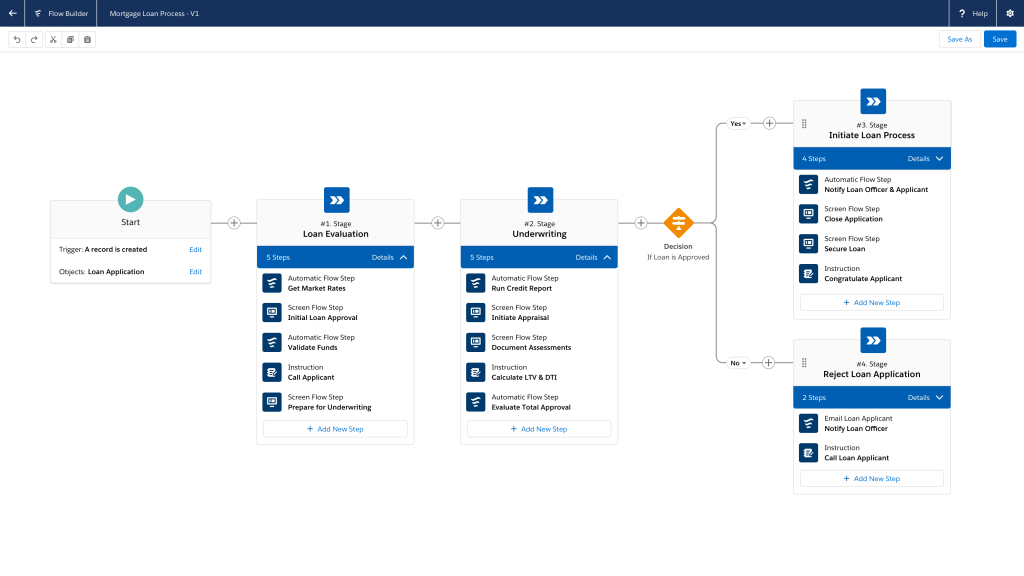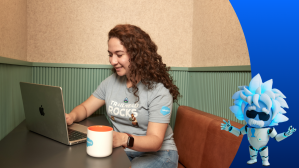Editor’s Note: This article was originally published in TechCrunch on 02/18/21
If 2020 was the year that forced the acceleration of digital transformation, this year will be the year that tests which companies can reimagine the new rules of business and find opportunities to innovate. Atop the list of technologies driving this change are artificial intelligence (AI) and automation, which together enable companies to accelerate productivity and augment customer and employee experiences. While most get that AI and automation are keys to future scale and optimization, many don’t realize the potential to reimagine the future of work and business through operational and business model innovation.
While some companies are using technology to incrementally make existing systems and processes more efficient, others are finding ways to introduce entirely new customer and employee experiences that unlock new business value. With this vision, businesses can alter their trajectory and explore the art of the possible.
This leaves three paths forward:
- Continue to scale and optimize what exists
- Introduce new capabilities and customer experiences, or
- Both. The winners will be those who embrace automation and AI as the means to level up.
The pandemic accelerated AI into the spotlight
Amidst the disruption of the pandemic, companies that once had the luxury of months or even years to digitally transform were suddenly racing to deliver real-time service and support online, at scale. Almost overnight, every business was forced to increase their reliance on technology that could improve efficiency and handle increased customer demand and expectations.
“AI and automation are among the most efficient ways to fast-track change and expedite time-to-value”
Brian Solis, Global Innovation Evangelist, Salesforce
McKinsey research shows that 85% of companies have accelerated digitization, with 67% specifically accelerating AI and automation adoption. This means exponential investment in emerging technologies that weren’t even on the horizon before COVID-19. Today, AI and automation are among the most efficient ways to fast-track change and expedite time-to-value—solving for areas where employees and processes couldn’t scale to meet increasing demands.
It’s time to ask: Will you keep iterating on the same processes? Or will you push yourself to innovate and create entirely new customer experiences?
Here are three ways to adopt an innovator mindset and get the most near- and long-term value from automation and AI.
Be intentional about delivering value: Start with the customer’s digital experience
Innovative leaders cut through the hype and focus on results. They are intentional about deploying technology to enable better outcomes at scale, like improving the customer’s experience or adapting to a work-from-anywhere workforce. An innovator not only improves what exists, but also looks for new opportunities. They realize that customer experience is an imperative and an important place to expedite value creation.
In fact, 84% of those surveyed in Salesforce’s State of the Connected Customer report said the experience a company provides is as important as its products and services.

Take AdventHealth; when faced with the onset of COVID-19 and increasing demand for their services, the non-profit healthcare provider needed a way to provide the same level of care and connection as its in-person health system. To do that they implemented a chatbot (named “Hope”) in just 24 hours to triage patients based on a series of questions recommended by the CDC before directing them to the appropriate nurse or practitioner for further screening. The bot expanded the footprint of its call center from 80 agents to over 300 in a matter of days and guided users to additional disease information, the COVID hotline or the AdventHealth app for telehealth screening. Since implementing, AdventHealth has conducted 250,000 chat sessions per month. The Hope chatbot significantly improved the customer experience, reducing case wrap-up time by 67%, decreasing average handle time by 14%. The healthcare provider estimates an annual cost savings around $1.2 million.
Be human-centric
Repetitive tasks are the antithesis of creativity, lessening the amount of time employees can use their uniquely human superpowers of imagination and thinking. Automation, rather ironically, enables innovative companies to be more human. It frees up people to be creative and curious, especially when combined with highly personalized insights and recommendations surfaced from AI.
Automation helps a business predict in advance where to increase human engagement to solve customer problems. Take for instance, the example of a service chatbot. Automation knows when to transfer a conversation from the bot to a live agent who is then able to provide a more personalized, empathetic approach. Not only are you optimizing business processes to deliver a new standard for customer experience, but you’re also freeing up creative human resources to do more meaningful work.
Be willing to adapt fast to retain and attract customers
The most progressive companies are using AI and automation as a competitive differentiator to not only retain customers, but attract new ones too.
Innovators have an eye on the customer experience gap: the gap between how a business operates and how they see their customers evolving. Within this divide, there’s both vulnerability and opportunity. And the pandemic raised the stakes on both, favoring those that moved quickly to bridge the gap.
“The most progressive companies are using AI and automation as a competitive differentiator to not only retain customers, but attract new ones too.”
Brian Solis, Global Innovation Evangelist
However, it’s not a one-time fix. The gap is always changing and innovators must keep innovating, especially at a time when consumer loyalty is up for grabs. During the pandemic, 76% of consumers have experimented with new brands or how they shop, reports McKinsey.
Businesses with a data culture are able to make decisions faster. The more data is at the heart of the enterprise, the more AI has to work with to help its human counterparts accelerate insights that lead to personalization and creative engagement. This has the power to unite disparate business functions and optimize customer journeys. The 2020 Salesforce State of Marketing report found, for example, that 63% of elite marketers share the same CRM with their sales and service departments.
Once you start applying automation and AI to customer data shared across multiple divisions, you not only get a 360-degree view of your customer, but can also anticipate how customer needs will change. This simple pivot gives you the ability to look for new ways to deliver value.
Take the long view with automation
It’s not just about using technology to reimagine workflows and business models, but to propel yourself to a future state of customer service (beyond support) and efficiency that doesn’t exist today. Ninety percent of respondents in the State of the Connected Customer report say that how a company acts during a crisis demonstrates its trustworthiness. And just over one third trust a company less because of its response in 2020.
True innovators are not only adopting technology to better serve their customers and support their employees in the near-term, but taking the long view by adopting AI and automation as a core business strategy. They’re willing to say: “We’ve been disrupted. These are the ways we have to think differently moving forward. Here’s how we’re investing in technology to deliver better outcomes for our customers, our employees, our shareholders, and the market in general.”
That leaves us with the questions: What else can we do? Where else can we focus so that we can come out of this pandemic even stronger? Are we prepared to handle a range of future scenarios? Answering these questions makes for a more innovative business that’s unified, agile, and focused on enhancing the employee and customer experience.


















